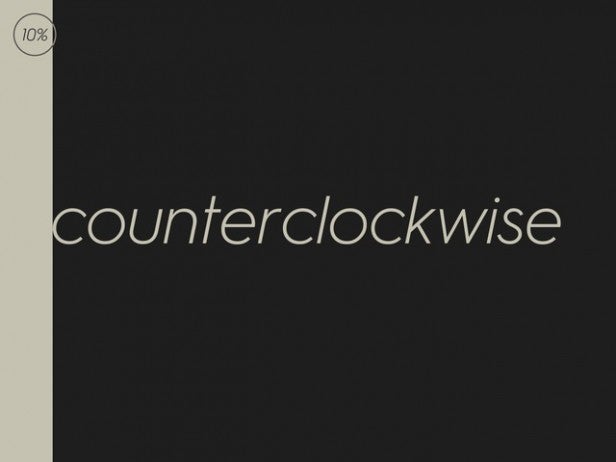Progress to 100 Review
Progress to 100
Missing some vital components

Verdict
Pros
- Great, novel twist on the word based puzzler
- Simple in concept – very much pick up and play
- Smart minimalist design
Cons
- Very little reward for success
- Nothing really keeping you gripped to play
- A bit of a lonely experience played solo
Key Specifications
- Review Price: £2.29
If there’s one thing even some of the most sophisticated games often struggle to do, it’s conveying in a subtle and not too overbearing manner just how you play them.
From demo levels to full on tutorials, telling the player what to do (without being seen to tell the player what to do) is an art plenty of notable titles haven’t handled all too well over the years, even before the advent of the tap-happy smartphone. Whether intentionally or not, however, Progress to 100 manages to bypass this hurdle entirely – namely because this is a game based around the entire concept of telling the player exactly what to do.
In an early Progress to 100 stage, the level amounts to nothing more than the words “touch here” placed from and centre in the middle of the screen. Your job, as the instruction suggests, is to touch the screen just where the game tells you to, placing your digit on top of the word “here” until the entire display changes colour, filling in from left to right.
Related: Best iPhone Games 2015

If that sounds a little dull, a little literal, a little straightforward, then rest assured things soon start to get a little more complex. Indeed, developer Ludosity would appear to have set out to make use of every contact point, every form of interaction that you can fashion with an iOS device. Just a few steps after a mere touch is enough to progress through a stage, you’ll find yourself shaking your phone or tablet like you’re riding a horse in the derby, twisting it round on end, or pressing your nose up against the screen along with every one of your fingers and thumbs just so there are 11 contact points.
Such is the spectacle that an event like that would cause, Progress to 100 is either a game you play on your own (so no-one can see the ridiculous things you’re doing, assuming you’re having some kind of weird freak out in the middle of a WhatsApp session) or one you play in a group, where communication and co-operation help unlock the puzzle. If you boil it down, that’s exactly what Progress to 100 is – a series of simple but sometimes cryptic word puzzles, where your only clue as to what’s required is a few loose instructions on the screen.
Related: Best iPad Games 2015

The biggest hurdle in your path, in fact, is getting over a fear of failure. Rather than sitting twiddling your thumbs, scratching your head, waiting to stumble across a solution, your best tactic is actually to experiment. Whatever the instruction on the screen triggers in your head as soon as you read it, give it a go, because it might be right.
Even if it isn’t, the fact the action didn’t work or only partially worked may give you a clue as to just what’s required. Progress to 100 is a game designed to make you think out of the box and take risks, which is where, as an experience, the game potentially runs into trouble. With no reward on offer other than your own satisfaction that you cracked the code and the unlocking of the next stage, joy is especially short lived. Before you’ve even had a chance to digest the challenge you’ve just overcome, you’re already taking on its successor. When gameplay is stripped this bare, it only takes one problem that you simply can’t solve to make you take a step back from play and never come back.
Related: Best Android Games 2015

It’s a problem plenty of other intentionally minimalist games also have to face up to, and Progress to 100 makes very little headway attempting to overcome. it It’s quite possible that, had I not been playing Ludosity’s latest for the purposes of a review, I may have walked away from it fairly early on purely because I didn’t get the particular nuance laced into one of the instructions. Once the novelty of the first ten levels has worn off, Progress to 100’s appeal starts to wane, especially if you’re playing it alone.
Which leaves it as a title that feels less of a game and more of an experience, and a slightly forgettable one at that. Though many of the puzzles are inventive and the delivery slick, it simply feels too paper weight to command your attention for all too long. Ultimately, Progress to 100 feels like the kind of game that sounds great on the drawing board and was no doubt bags of fun for the developer to work on, but it’s missing a vital component to make it anything other than a well made novelty.
Verdict
A neat little idea that plays with the meaning of words and the scope of their possible definitions, Progress to 100 is a puzzler at core, challenging you with performing simple touch or accelerometer based tasks. Sadly, however, these tasks largely feel like a novelty rather than anything of substance, with the game playing a little like an iOS tech demo rather that runs out of steam alarmingly quickly.

